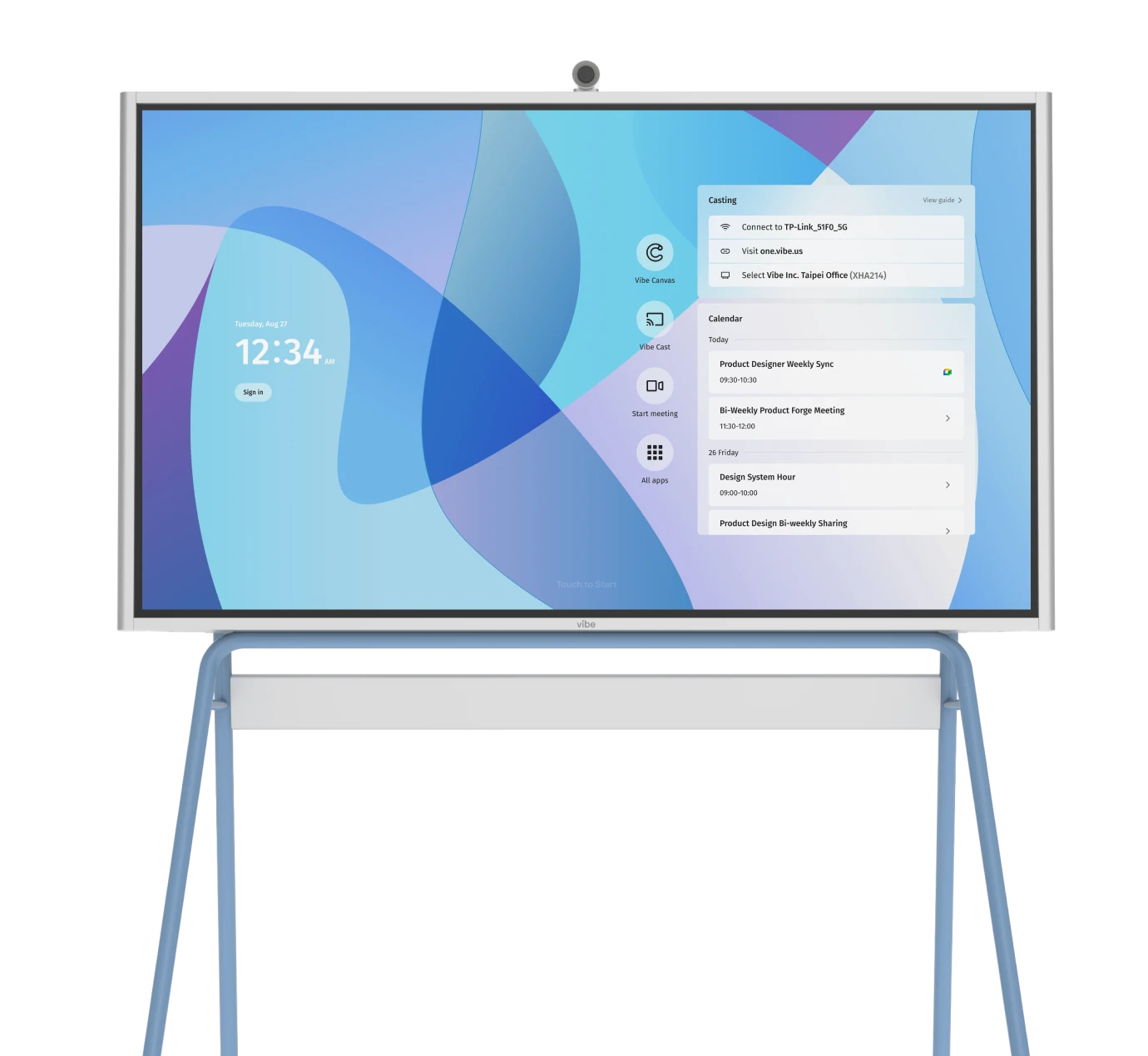Strong team communication forms the backbone of every successful organization. When teams communicate effectively, they solve problems faster, make better decisions, and create an environment where everyone feels heard and valued. Poor team communication, on the other hand, leads to missed deadlines, frustrated employees, and costly mistakes that could have been avoided.
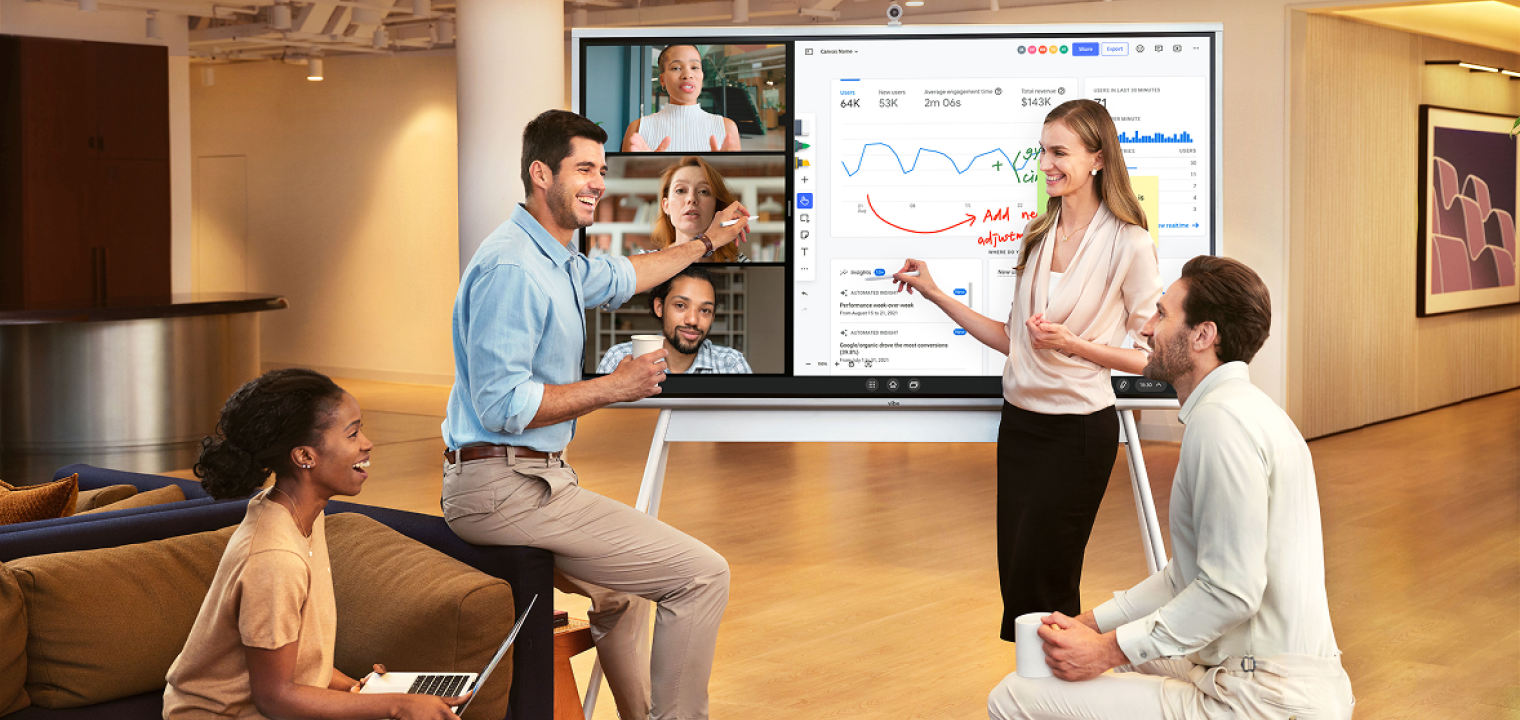 People using a Vibe Board to boost team communication in a hybrid meeting.
People using a Vibe Board to boost team communication in a hybrid meeting.Whether you’re leading a remote team, managing hybrid workers, or coordinating in-person collaboration, the strategies in this guide will help you build the communication foundation your team needs to thrive. From understanding different communication styles to implementing practical tools and techniques, you’ll discover actionable ways to transform how your team shares information and works together.
- Use multiple communication approaches together: Active listening, clear expectations, and the right technology work best when combined, not used separately.
- Match your communication style to the situation: Assertive communication works for most scenarios, but analytical, coaching, and adaptive styles have their place depending on the context.
- Address problems early through regular check-ins: One-on-one meetings and quick conflict resolution prevent small issues from becoming team-wide problems.
- Technology enhances good communication habits: The right tools streamline workflows and support both real-time and delayed communication across any work environment.
What is Team Communication?
Team communication encompasses all the ways team members share information, ideas, feedback, and updates to accomplish shared goals. It includes formal presentations and informal conversations, written documentation and verbal discussions, as well as the non-verbal cues that influence how messages are received and understood.
Effective workplace communication goes beyond simply exchanging information. It involves creating an environment where team members feel comfortable expressing their thoughts, asking questions, and providing honest feedback. This type of communication builds trust, aligns everyone toward common objectives, and ensures that important details don’t get lost in translation.
Why is Healthy Team Communication Important?
Healthy team communication directly impacts every aspect of workplace performance and employee satisfaction. Teams with strong communication practices complete projects 25% faster and experience significantly lower turnover rates compared to teams with poor communication habits.
When team communication flows smoothly, problems get identified and resolved quickly before they escalate into major issues. Team members understand their roles clearly, reducing confusion and duplicate work. Additionally, good communication practices foster innovation by creating psychological safety where employees feel comfortable sharing creative ideas and constructive feedback, creating positive team dynamics.
Poor team communication, conversely, creates a cascade of problems. Misunderstandings lead to rework, missed deadlines cause stress, and lack of clarity results in team members working toward different goals. These issues compound over time, ultimately affecting both productivity and morale.
Types of Team Communication
Understanding the different types of team communication helps you choose the most effective approach for each situation. Each type serves specific purposes and works best in particular contexts.
-
Verbal communication – includes face-to-face conversations, video calls, phone discussions, and presentations. This type allows for immediate feedback, tone interpretation, and real-time clarification. It’s ideal for brainstorming sessions, complex problem-solving, and situations requiring emotional nuance.
-
Written communication – encompasses emails, project documentation, chat messages, and formal reports. Written formats provide permanent records, allow for careful message crafting, and work well for detailed instructions or information that team members need to reference later.
-
Non-verbal communication – involves body language, facial expressions, tone of voice, and other visual cues that accompany verbal messages. These signals often convey more meaning than words alone and significantly impact how messages are interpreted.
-
Visual communication – uses charts, diagrams, presentations, and other graphic elements to convey information. This visual type is particularly effective for explaining complex processes, sharing data insights, and helping visual learners understand concepts quickly.
Communication Contexts
Beyond the medium itself, understanding the context in which team communication occurs helps you choose the most effective approach for each situation.
-
Formal vs Informal communication – serves different purposes within team dynamics. Formal communication includes official announcements, structured meetings, and documented procedures that require consistency and clarity. Informal communication happens through casual conversations, quick check-ins, and spontaneous discussions that build relationships and facilitate rapid information sharing.
-
Synchronous vs Asynchronous communication – addresses timing needs. Synchronous communication occurs in real-time through meetings, phone calls, or live chat conversations. Asynchronous communication allows for delayed responses through email, project comments, or recorded messages, accommodating different schedules and time zones.
Common Team Communication Styles
Assertive Communication
The Gold Standard
Expresses thoughts clearly and respectfully while considering others’ perspectives and setting appropriate boundaries.
Key Characteristics:
-
States needs and opinions confidently without being aggressive
-
Listens to feedback and responds constructively
-
Maintains professional relationships while advocating for themselves
Active Listening Style
Understanding First
Gives complete attention to speakers, asks clarifying questions, and reflects back what was heard to create psychological safety.
Key Characteristics:
-
Eliminates distractions and focuses entirely on the speaker
-
Paraphrases key points to confirm understanding
-
Shows empathy and validates others’ perspectives

Analytical Communication
Data-Driven Approach
Prefers data-driven discussions with facts, figures, and concrete evidence to support logical decision-making.
Key Characteristics:
-
Requests specific data and metrics before making decisions
-
Breaks down complex problems into logical components
-
Provides well-researched recommendations with supporting evidence
Coaching Communication
Empowering Others
Guides team members through strategic questioning and empowerment rather than direct instruction to build their skills and confidence.
Key Characteristics:
-
Asks open-ended questions to help others find solutions
-
Provides guidance while encouraging independent thinking
-
Celebrates progress and builds confidence through positive reinforcement
Adaptive Communication
Flexible & Contextual
Adjusts communication approach based on the situation, audience, and context to match what the moment requires.
Key Characteristics:
-
Reads the room and modifies tone and style accordingly
-
Switches between formal and informal communication as needed
-
Tailors message complexity to audience knowledge level
What Effective Team Communication Looks Like
Effective team communication creates an environment where information flows freely in all directions. Team members feel comfortable asking questions, sharing ideas, and providing honest feedback without fear of judgment or retaliation. Meetings are productive and focused, with clear agendas and actionable outcomes.
In teams with strong communication, conflicts get addressed quickly and respectfully before they escalate. Everyone understands their roles and responsibilities clearly, reducing confusion and overlap. Updates are shared regularly and consistently, keeping everyone informed about project progress and changes.
You’ll also notice that effective team communication adapts to different situations and preferences. Some discussions happen in real-time through video calls, while others occur asynchronously through written updates. The team uses various communication channels strategically, choosing the right method for each type of message.
10 Strategies to Improve Team Communication
Transforming your team’s communication doesn’t happen overnight, but implementing these proven strategies will create lasting improvements in how your team collaborates and achieves results. Each strategy builds upon the others, creating a comprehensive approach that addresses the most common communication challenges teams face in today’s workplace.

1. Practice Active Listening and Reflective Communication
Active listening goes far beyond simply hearing words. It requires giving your full attention to the speaker, eliminating distractions, and focusing on understanding both the content and emotions behind their message. Pay attention to body language, tone, and facial expressions, as these non-verbal cues often convey as much meaning as the words themselves.
Reflective communication involves paraphrasing what you’ve heard back to the speaker using your own words. This technique confirms your understanding and shows that you value their input. When practicing reflective communication, avoid making the conversation about yourself and instead focus on empathizing with the speaker’s perspective.
2. Establish Clear Expectations and Communication Guidelines
Set clearly defined expectations for how, when, and why team members should communicate. This includes establishing the frequency of communications, preferred communication channels for different types of messages, and appropriate tone for various situations. Without clear guidelines, team members may misinterpret expectations, leading to confusion and inefficiency.
Create protocols that specify which communication methods to use for different scenarios. For example, use instant messaging for quick questions, email for formal updates, and video calls for complex discussions. Ensure everyone understands their communication responsibilities and the standards for response times.
3. Resolve Conflicts Quickly and Directly
Small conflicts can escalate into major problems if left unaddressed. Teach team members conflict resolution strategies so they can address issues quickly, directly, and respectfully. When conflicts arise, encourage open dialogue and focus on finding solutions rather than assigning blame.
Address issues immediately when they surface, even if they seem minor. Provide mediation when team members cannot resolve issues independently, and create safe spaces for difficult conversations. Remember that avoiding conflict doesn’t make it disappear—it usually makes it worse.
4. Encourage Two-Way Feedback and Open Dialogues
Create a culture where feedback flows in both directions—from leaders to team members and vice versa. Regular feedback sessions help team members understand their performance while giving leaders insight into team dynamics and areas for improvement. Make feedback constructive, specific, and actionable rather than vague or purely critical.
Use anonymous surveys to gather honest feedback about team communication and workplace culture. Schedule regular one-on-one meetings to address individual concerns and provide personalized support. Encourage team members to provide feedback to leadership, creating a truly open communication environment.

5. Establish Clear Team Roles
Confusion about roles and responsibilities creates communication breakdowns and duplicated efforts. Clearly define each team member’s role, responsibilities, and decision-making authority. Document these roles and make them easily accessible to everyone on the team.
Regularly review and update role definitions as projects evolve and team members develop new skills. When roles overlap, establish clear protocols for coordination and communication. This clarity reduces the need for constant check-ins and helps team members communicate more efficiently.
6. Choose the Right Communication Method for Each Message
Match your communication method to the message content, urgency, and audience. Consider whether the information requires immediate response, needs documentation, or would benefit from face-to-face interaction. Email works well for updates and documentation, but sensitive conversations require video calls or in-person meetings.
Use instant messaging for quick questions and real-time coordination. Choose video conferencing for face-to-face conversations and complex discussions. Leverage project management tools for task coordination and progress tracking. The key is being intentional about your channel selection.
7. Be Clear, Concise, and Transparent
Avoid jargon and ambiguous language that can confuse team members. Speak and write plainly, provide context for your decisions, and explain the reasoning behind important choices. Transparency builds trust and helps team members understand how their work contributes to larger goals.
When giving instructions, be specific about expectations, deadlines, and deliverables. Use simple, accessible language that everyone can understand regardless of their background or expertise level. Clear communication prevents misunderstandings and reduces the need for follow-up clarifications.
8. Conduct Regular One-on-One Meetings
Schedule individual meetings with team members to address concerns, provide feedback, and check on well-being. These private conversations allow for more personal communication and help identify issues before they become larger problems. One-on-one meetings also strengthen relationships and build trust between team members and leaders.
Use these meetings to discuss career development, provide personalized feedback, and understand individual communication preferences. Create a safe space where team members feel comfortable sharing concerns or suggestions they might not voice in group settings.
9. Implement Team-Building Activities
Organize team-building exercises that help members get to know each other and work together more effectively. Strong personal relationships improve team communication by creating trust and understanding between colleagues. Additionally, celebrate both individual and team achievements to build morale and strengthen relationships.
Plan regular team activities and social events that allow for informal interaction. Create opportunities for team members to collaborate on non-work projects or participate in shared learning experiences. These activities build the foundation for better communication during work-related discussions.

10. Leverage Technology and Communication Tools
Use project management and communication platforms like Monday.com or Trello to centralize information and streamline workflows. Modern tools help teams stay organized, share files efficiently through platforms like Google Workspace or Microsoft 365, and maintain clear communication channels across different locations and time zones using Zoom or Microsoft Teams. Choose tools that integrate well with existing workflows—such as Zapier for connecting different apps—and don’t create additional complexity.
Implement platforms that support both real-time and asynchronous communication, such as Slack for instant messaging and Loom for video updates, allowing team members to collaborate effectively regardless of their schedules. Tools like Notion or Confluence can serve as knowledge bases for asynchronous information sharing. Provide training on new tools and establish guidelines for their use to ensure consistent adoption across the team.
Building a Culture of Communication
Building exceptional team communication requires commitment, consistency, and the right combination of strategies working together to create lasting change. The ten strategies outlined in this guide—from practicing active listening and establishing clear expectations to leveraging technology and conducting regular one-on-ones—form a comprehensive framework that addresses the most common communication challenges teams face in today’s dynamic work environment. Success comes not from implementing these strategies in isolation, but from weaving them together into a cohesive communication culture where every team member feels heard, valued, and empowered to contribute their best work. As you begin implementing these approaches, remember that effective team communication is an ongoing journey that requires the right tools, consistent practice, and a platform that can adapt to your team’s evolving needs and communication styles.
Turn Communication Challenges into Collaboration Success with Vibe Board S1
The Vibe Board S1 transforms team communication by bringing together all the strategies discussed in this guide into one powerful, intuitive platform. Whether your team is practicing active listening during video conferences, establishing clear expectations through visual project planning, or choosing the right communication method for each message, Vibe boards support every aspect of effective team communication. Its infinite canvas enables real-time visual communication, allowing team members to freely collaborate, express ideas, and brainstorm effectively in hybrid settings. Having seamless integration with over 250 popular applications and collaboration tools (including everything mentioned in strategy #10) ensures your team can leverage technology without disrupting existing workflows.
From conducting productive one-on-one meetings with shared digital workspaces to implementing team-building activities through collaborative brainstorming sessions, Vibe elevates every communication style your team uses. The platform’s intuitive interface supports assertive communication through clear visual presentations, enhances analytical discussions with data visualization tools, and facilitates coaching conversations through interactive problem-solving features.
Ready to transform your team communication and see these strategies in action?
Request a demo today to learn more about how the Vibe Board S1 can improve your team’s collaboration capabilities.
Watch the video to discover how Vibe Board S1 makes team communication effortless and engaging:
Team Communication FAQs
What are the 5 C’s of communication?
The 5 C’s of communication are Clear, Concise, Concrete, Correct, and Coherent. These principles ensure that messages are easily understood, free from ambiguity, and effectively convey the intended information. Following the 5 C’s helps prevent miscommunication and improves overall team communication effectiveness.
What makes effective team communication?
Effective team communication combines active listening, clear expectations, regular feedback, and the right communication channels for each situation. It requires psychological safety where team members feel comfortable expressing ideas and concerns, along with consistent practices that keep everyone informed and aligned. Trust, transparency, and mutual respect form the foundation of all effective communication.
What are the key aspects of team communication?
The key aspects include choosing appropriate communication methods (verbal, written, visual), understanding different communication styles (assertive, analytical, coaching), and maintaining both formal and informal communication channels. Regular feedback, conflict resolution, and clear role definitions are also essential aspects that support strong team communication. Technology and tools that facilitate collaboration round out the approach to successful team collaboration and communication.



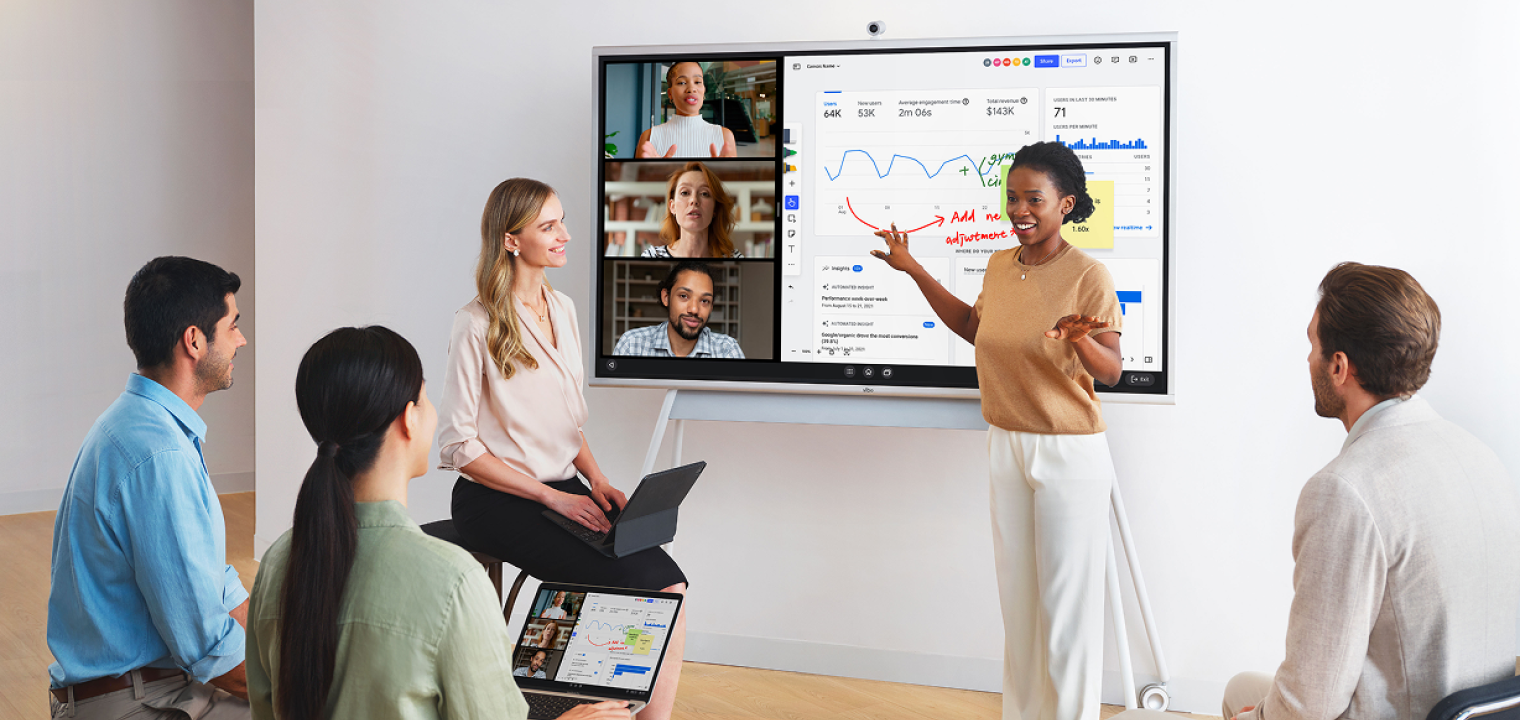
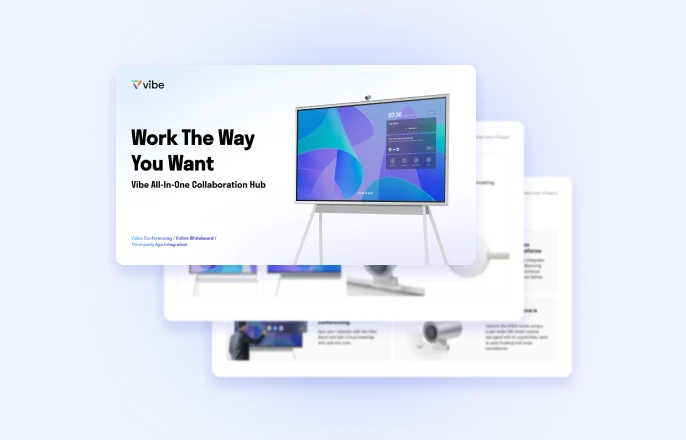


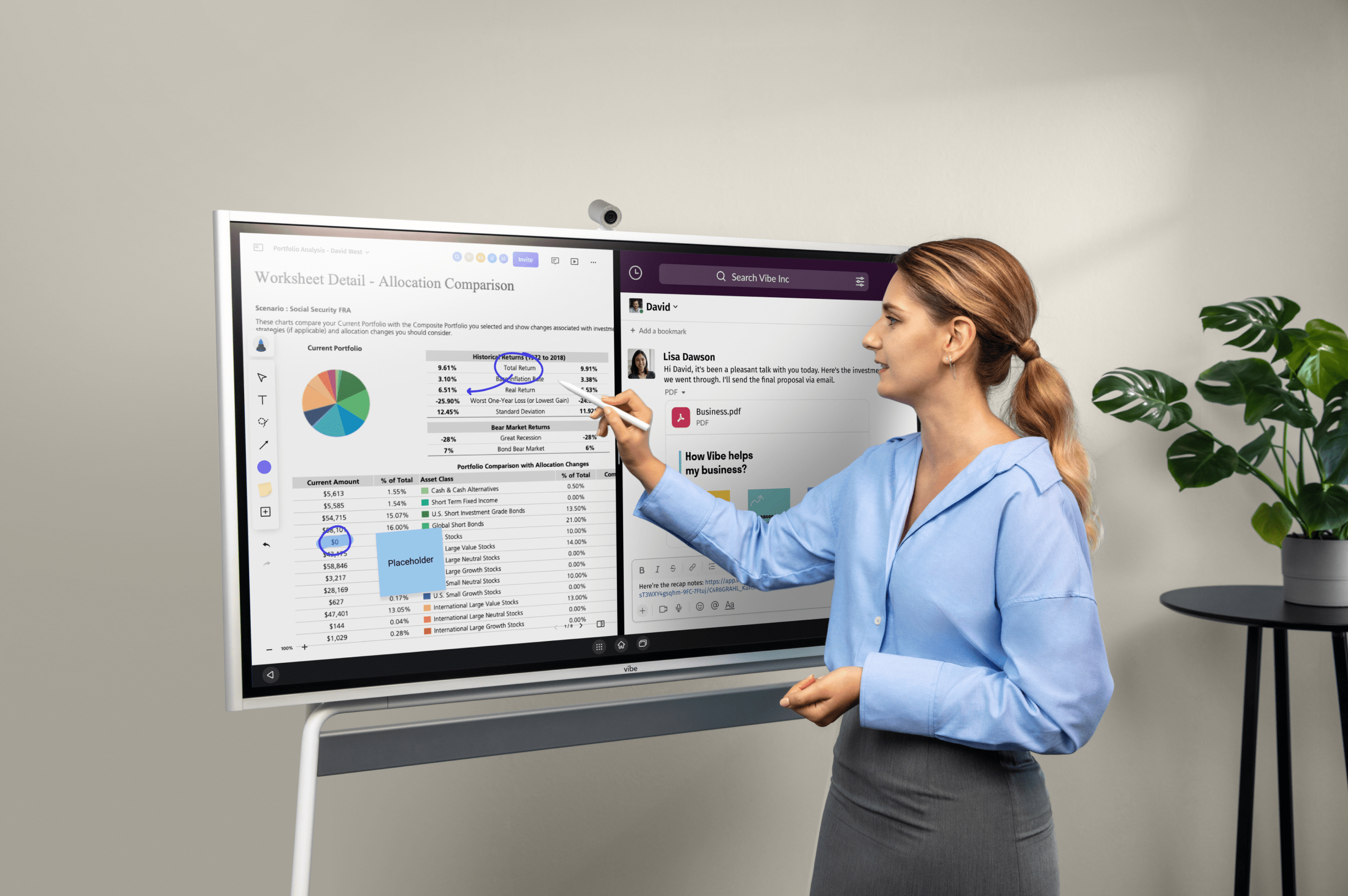

-1sbltxxq4FYxHrXrwJVLsCDNsXpqNa.webp)
-5Zp0pmSytvcuYDVs1LvuwplKuRneK0.webp)
